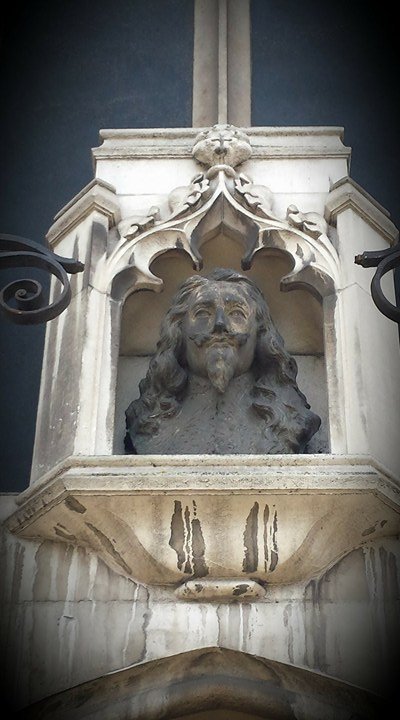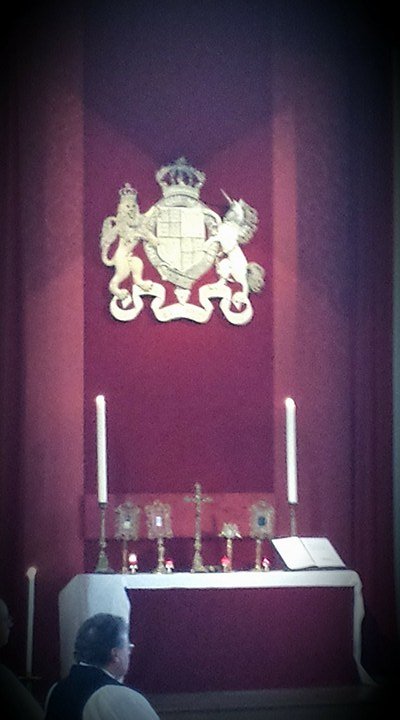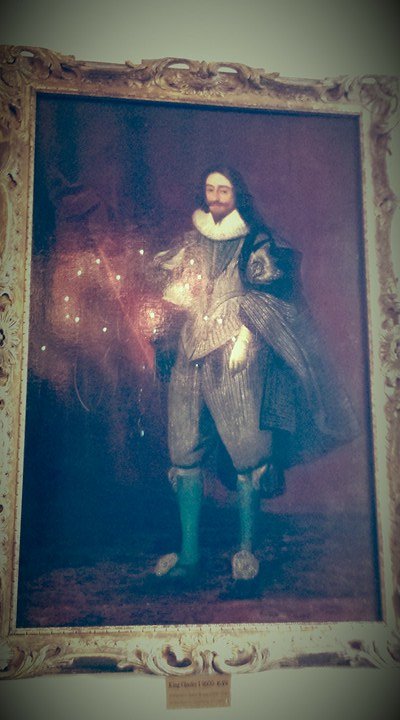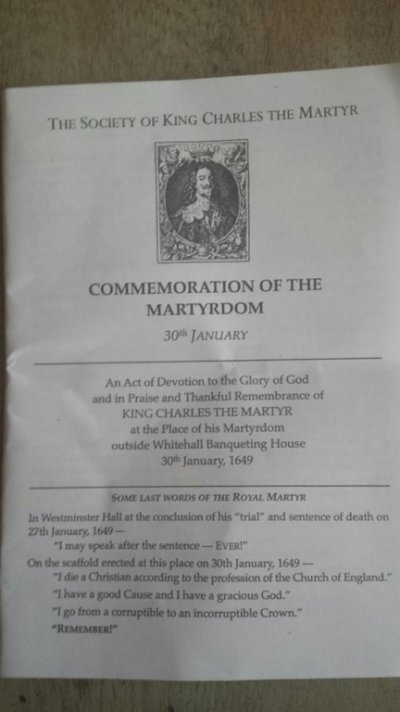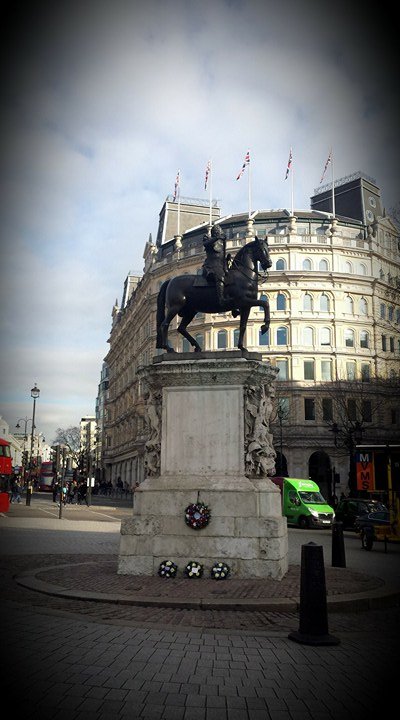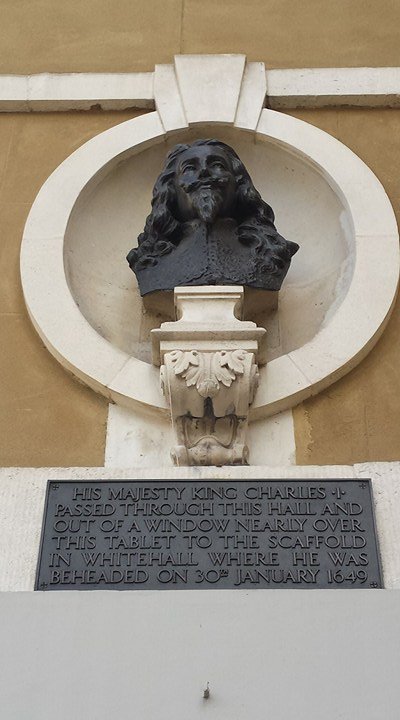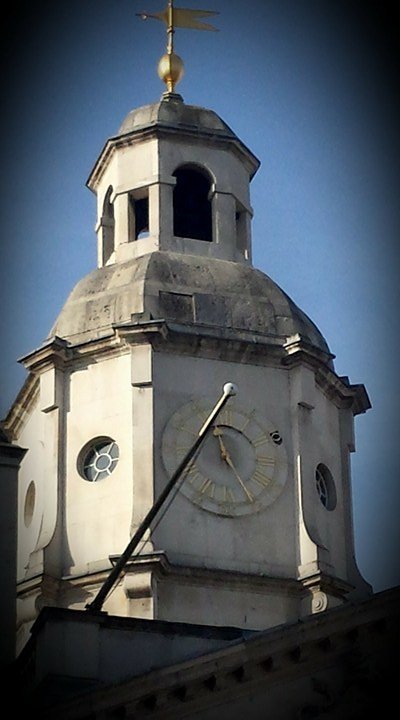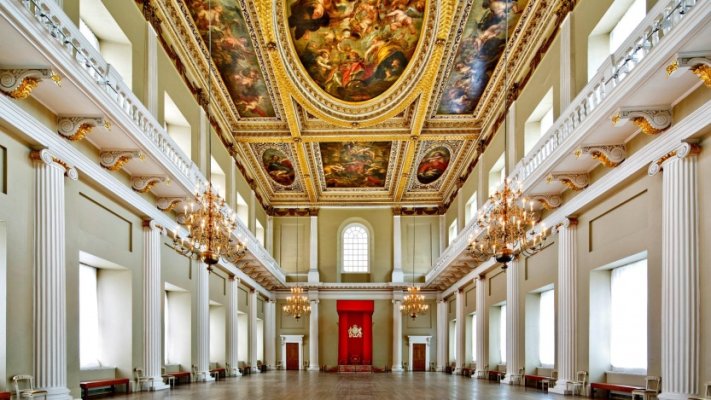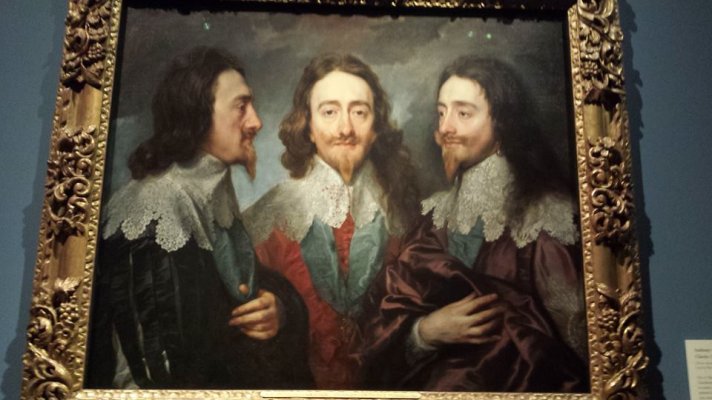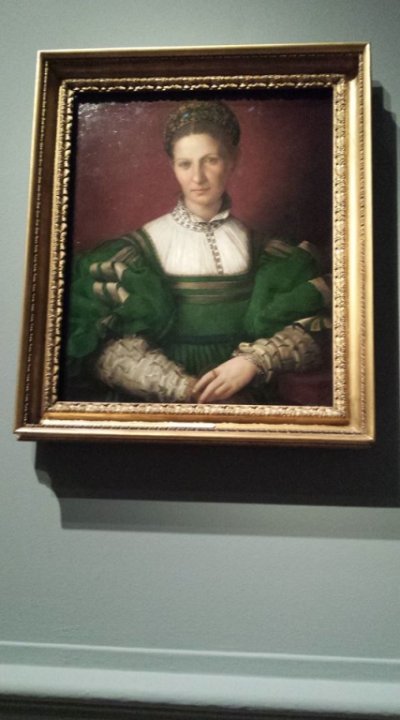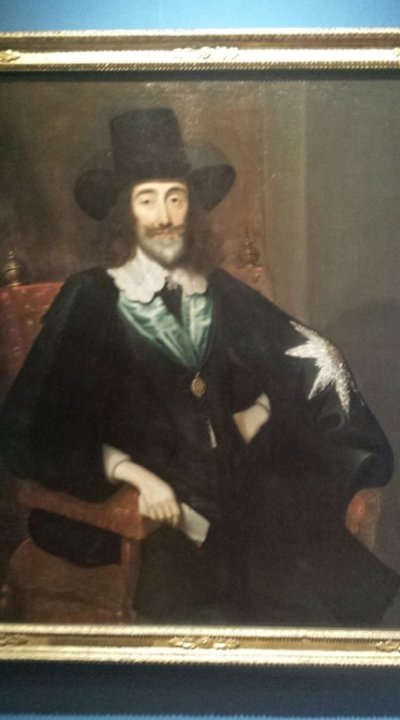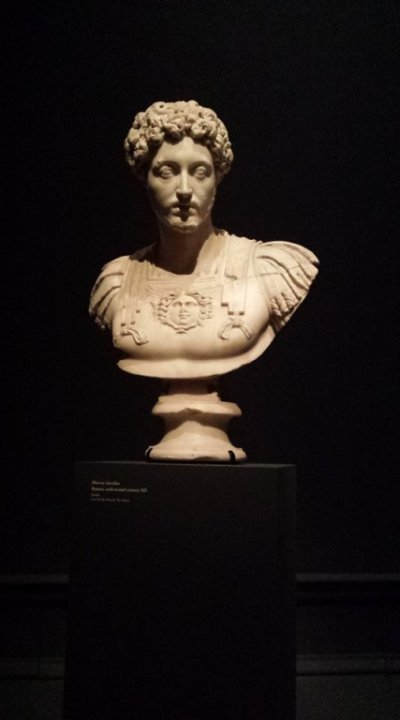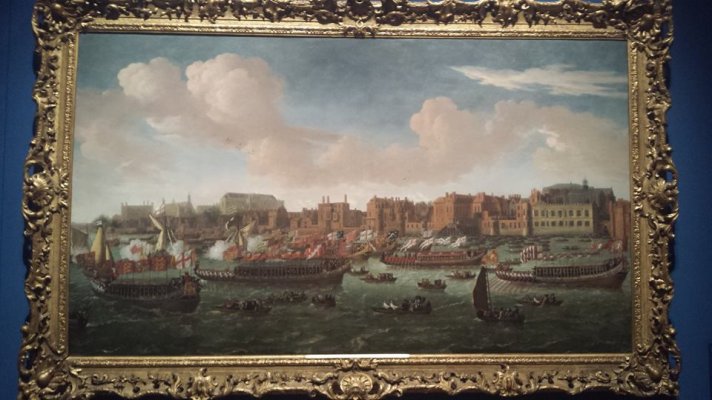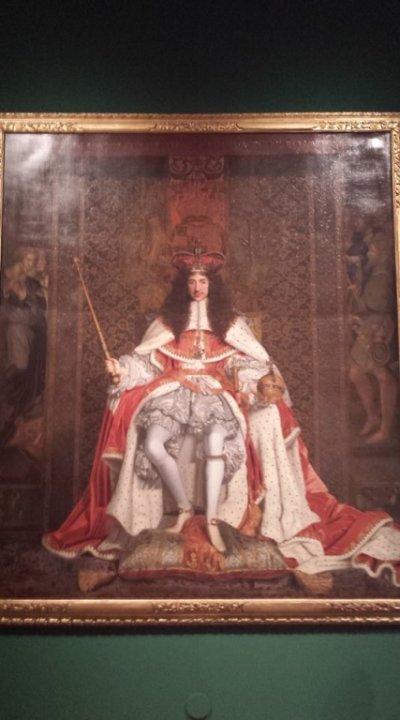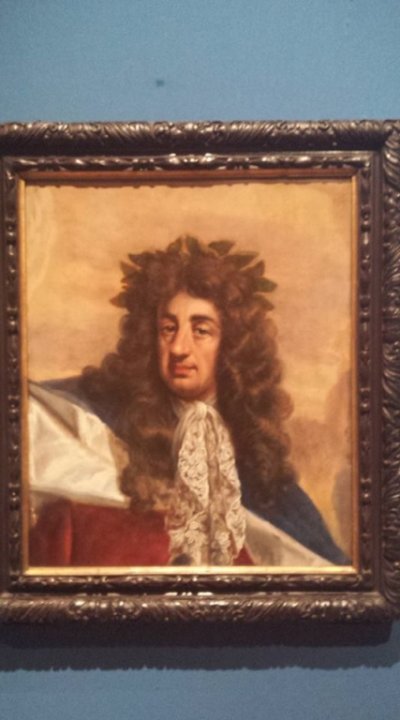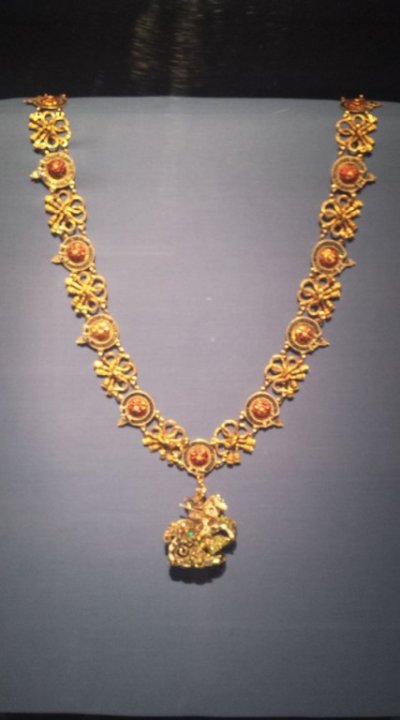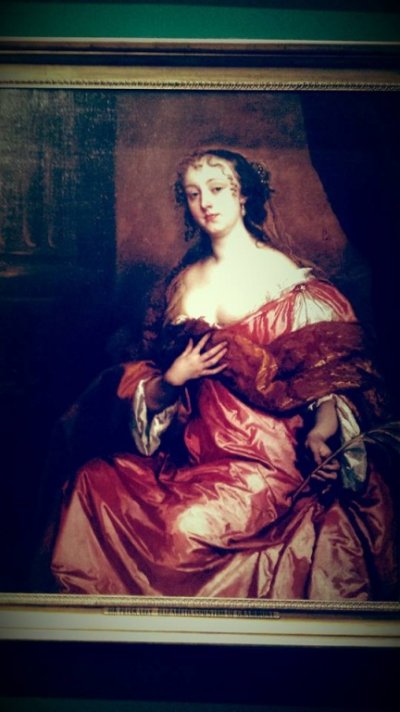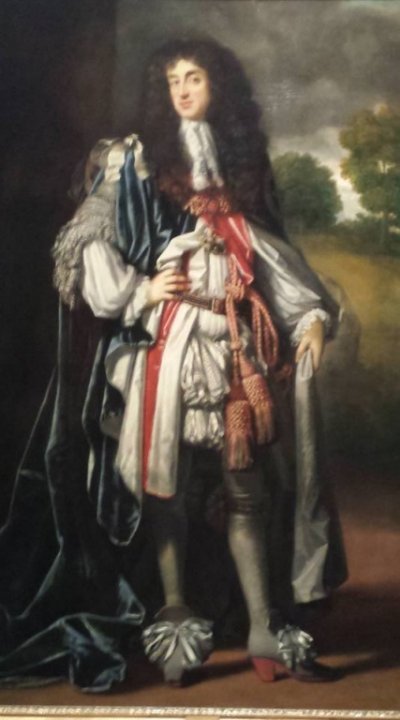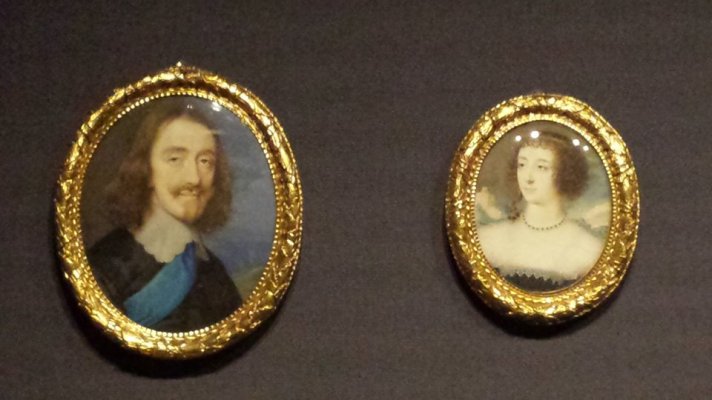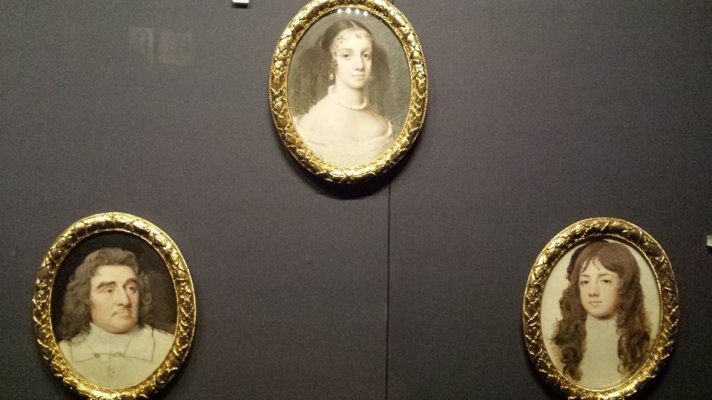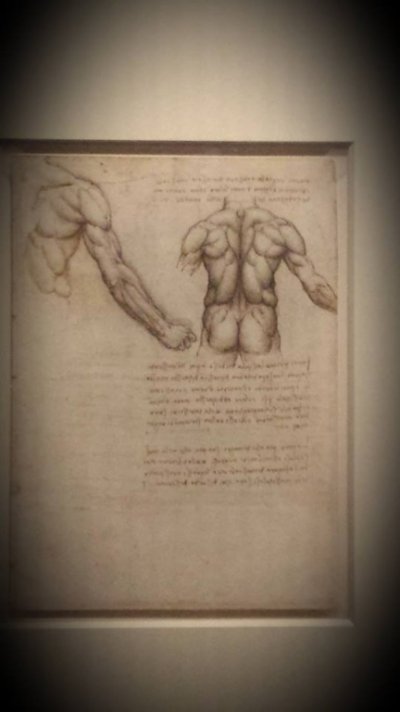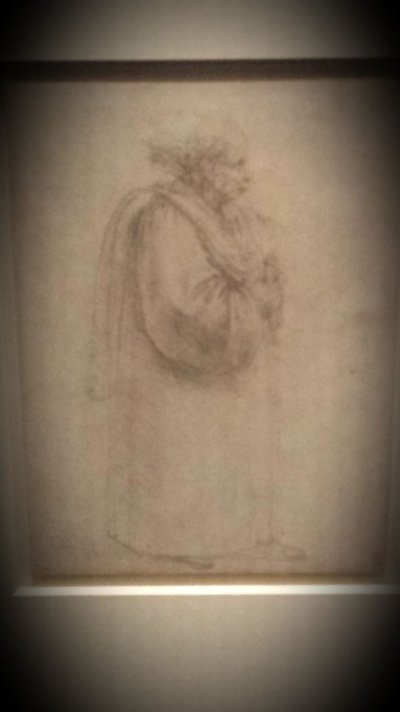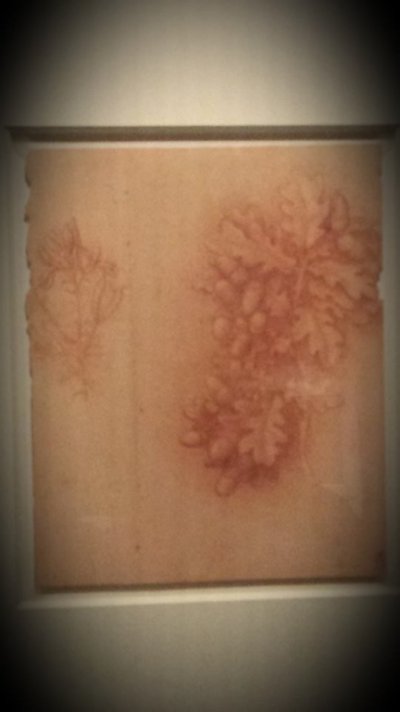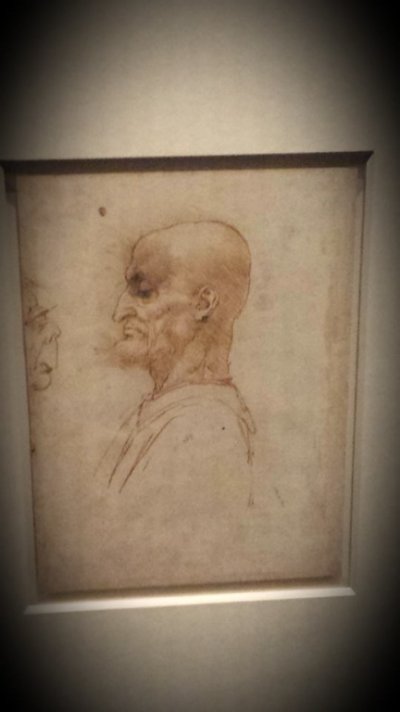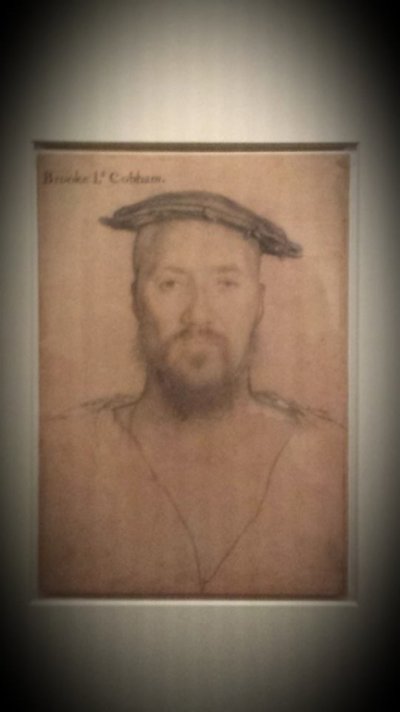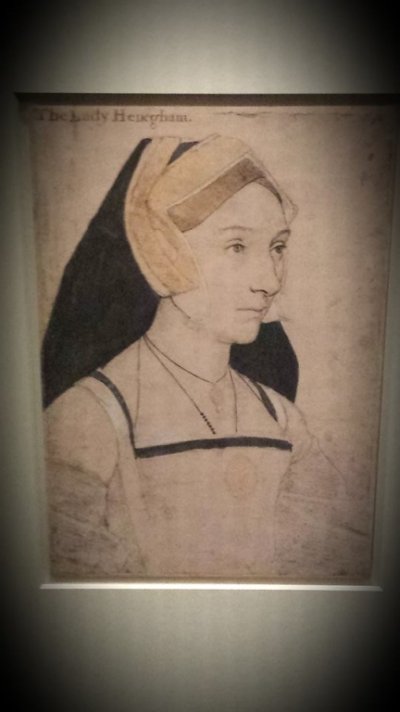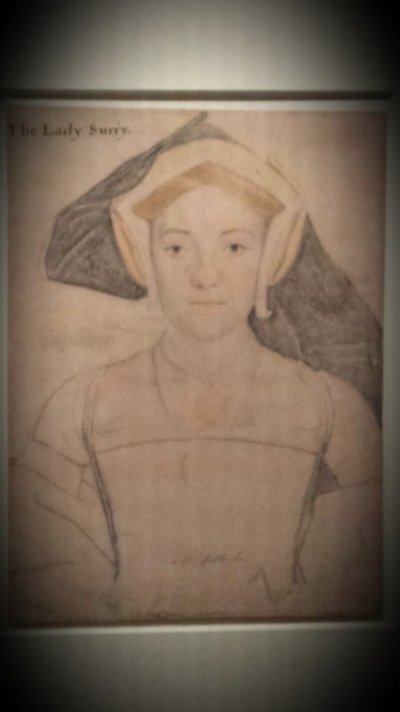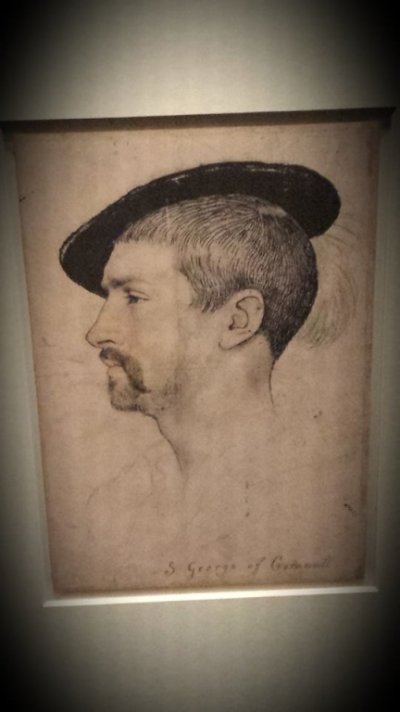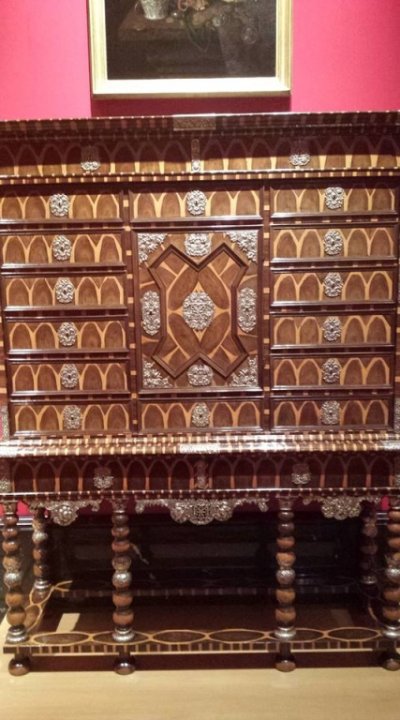You are using an out of date browser. It may not display this or other websites correctly.
You should upgrade or use an alternative browser.
You should upgrade or use an alternative browser.
Charles I (1600-1649) and Henrietta Maria of France (1609-1669)
- Thread starter KingCharles
- Start date
If you have answers, please help by responding to the unanswered posts.
WreathOfLaurels
Courtier
- Joined
- Jun 10, 2016
- Messages
- 592
- City
- Wellington
- Country
- New Zealand
They were an awful pair and a disaster. I never could take any interest in them
It's because they were so awful and disasterous that I find them so interesting - I tend to find failure more interesting than success. Say what you will but their impact was very important and still worthy of analysis and study. I can't help wondering what might have happened if someone else was monarch in that period, or if Charles had married someone else, or if through some miracle Charles had been able to achieve his goals...
I don't think so.. she was considered a suitable match for the heir to Louis xiv [ at the time of the marriage] the Duc d'Orleans, and was entrusted by Louis with important negotiations with her brother Charles II. It seems that at the time of her death, she was pretty much universally loved at Versailles [altho' not by the Chevalier de Lorraine, who MAY have poisoned her].
WreathOfLaurels
Courtier
- Joined
- Jun 10, 2016
- Messages
- 592
- City
- Wellington
- Country
- New Zealand
I don't think so.. she was considered a suitable match for the heir to Louis xiv [ at the time of the marriage] the Duc d'Orleans, and was entrusted by Louis with important negotiations with her brother Charles II. It seems that at the time of her death, she was pretty much universally loved at Versailles [altho' not by the Chevalier de Lorraine, who MAY have poisoned her].
Henriette-Anne wasn't poisoned by anyone. She probably died of peritonitis following appendicitis, besides her health was always poor (probably tuberculosis or anorexia) and multiple pregnancies and miscarriages didn't help. She did treat her husband badly and was actually a right little madam where he was concerned, although in fairness most of Philippe's equally poor treatment of her was mostly down to his own frustrations, boredom, and nobody taking him seriously - all things considered the negioations should have been his job, him being the man and all.
Countessmeout
Imperial Majesty
- Joined
- Sep 19, 2011
- Messages
- 13,069
- City
- alberta
- Country
- Canada
She was never healthy. She suffered from convulsions when she was young. And though she claimed to be poisoned before her death, she had been suffering symptoms before even returning to France. The autopsy said gastroenteritis though some doubted it. The fact the man some surveys her poisoner was the suspected lover of her husband, helped with such rumors. Her husband's second wife said her husband had to have rosaries around, to bring himself to have relations with a woman.
Her eldest daughter died of a similar fait. And it too was rumored to be poison. In her case speculation was her mother in law because she couldn't have Kidd. But it is said both her husband and mother in law genuinely were distressed by her death. She was over weight and suffered depression which wouldn't help. Her husband's infirmities, her lack of children and the coldness of court where the queen could not be touched, all contributed.
Her eldest daughter died of a similar fait. And it too was rumored to be poison. In her case speculation was her mother in law because she couldn't have Kidd. But it is said both her husband and mother in law genuinely were distressed by her death. She was over weight and suffered depression which wouldn't help. Her husband's infirmities, her lack of children and the coldness of court where the queen could not be touched, all contributed.
This Morning,[a sparkling sunny day in London] we attended the[Anglo-Catholic] High Mass at the 'Banqueting House' in Whitehall, where 369 years ago [to the hour] Charles 1st [King and Martyr] was beheaded.
'Standing room' only the mass was also attended by 2 kings [we were told by Ushers], not seeing them ourselves. King Simeon of Bulgaria and King Constantine of the Hellenes.
Also present were Lord and Lady Nicholas Windsor. Lord Nicholas is Patron of the 'Society of Charles, King and Martyr' which [each year] organises a set of commemorations here and at St Georges Chapel Windsor, where the King was buried]
Here are some photographs...
The last picture shows the Clock Tower of the Horseguards building,which overlooks the Banqueting House. The Clock has a Black dot by the two 'marker', denoting and commemorating the hour the Kings head was struck from his body.
'Standing room' only the mass was also attended by 2 kings [we were told by Ushers], not seeing them ourselves. King Simeon of Bulgaria and King Constantine of the Hellenes.
Also present were Lord and Lady Nicholas Windsor. Lord Nicholas is Patron of the 'Society of Charles, King and Martyr' which [each year] organises a set of commemorations here and at St Georges Chapel Windsor, where the King was buried]
Here are some photographs...
The last picture shows the Clock Tower of the Horseguards building,which overlooks the Banqueting House. The Clock has a Black dot by the two 'marker', denoting and commemorating the hour the Kings head was struck from his body.
Attachments
Last edited:
Osipi
Member - in Memoriam
- Joined
- Jul 2, 2008
- Messages
- 17,267
- City
- On the west side of North up from Back
- Country
- United States
Thank you, wyevale, for making a little bit more of British history come alive for me. Beautiful photos. 

Missjersey
Serene Highness
- Joined
- Sep 2, 2017
- Messages
- 1,124
- City
- jersey shore
- Country
- United States
Thank you wyevale for sharing your day and the kindness of your photographs. I hope you are sitting with a cup of tea and biscuit knowing how much you are appreciated...
Off 'to town' to see -
https://www.royalacademy.org.uk/exh...MI34OBiIWl2QIVrbztCh2oZQ5xEAAYASAAEgKPnvD_BwE
Then, after Lunch at Fortnum & Mason, on to Buckingham Palace to see-
https://www.royalcollection.org.uk/...rt-power/the-queens-gallery-buckingham-palace.
Will post a full report for those interested, but not able to be in London to see these exhibitions in person.
https://www.royalacademy.org.uk/exh...MI34OBiIWl2QIVrbztCh2oZQ5xEAAYASAAEgKPnvD_BwE
Then, after Lunch at Fortnum & Mason, on to Buckingham Palace to see-
https://www.royalcollection.org.uk/...rt-power/the-queens-gallery-buckingham-palace.
Will post a full report for those interested, but not able to be in London to see these exhibitions in person.
Yesterday's trip to the Royal Academy of Art [Piccadilly, London] to see 'Charles 1st, King and Collector', an exhibition which [for the first and only time since 1649], assembles much of the spectacular art collected by the King, and flogged off to various European collectors [by Oliver Cromwell] after his execution in 1649.
We were STUNNED, by the breadth, quality and number of the works on display. Regrettably photography was discouraged, but we managed a few sneaky ones..
The Pictures are mine own and therefore NOT subject to Copyright...
1] King Charles Ist , by Sir Anthony Van Dyke. Triple portrait dispatched to Rome so Gian Lorenzo Bernini could sculpt a bust [later lost] in the Whitehall Palace Fire[[1698]. Painted circa 1636.
2] Lady in Green by Agnolo Bronzino (1503 - 1572)
3] Charles Ist at his Trial by Edward Bower [1648/9]
4] Marcus Aurelius, Roman 2nd Century A.D.
There were countless large scale Tapestries, Frescoes, Portraits, Allegorical and Religious works [too large to photograph], by some of the greatest artists ever to practice, including Rembrandt, Da Vinci, Caravaggio,Velasquez, Holbein,Bruegel, Rubens and Van Dyke.
We were STUNNED, by the breadth, quality and number of the works on display. Regrettably photography was discouraged, but we managed a few sneaky ones..
The Pictures are mine own and therefore NOT subject to Copyright...
1] King Charles Ist , by Sir Anthony Van Dyke. Triple portrait dispatched to Rome so Gian Lorenzo Bernini could sculpt a bust [later lost] in the Whitehall Palace Fire[[1698]. Painted circa 1636.
2] Lady in Green by Agnolo Bronzino (1503 - 1572)
3] Charles Ist at his Trial by Edward Bower [1648/9]
4] Marcus Aurelius, Roman 2nd Century A.D.
There were countless large scale Tapestries, Frescoes, Portraits, Allegorical and Religious works [too large to photograph], by some of the greatest artists ever to practice, including Rembrandt, Da Vinci, Caravaggio,Velasquez, Holbein,Bruegel, Rubens and Van Dyke.
Attachments
Last edited:
After a 'slap up' Lunch at Fortnums we went to the second [and allied] exhibition at the Queens Gallery, [Buckingham Palace], 'Charles ll, Politics and Power' which charts the re-assembly of the Royal Collections after the 11 year interregnum, with Charles ll seeking to refurnish his empty Palaces. Many things were given/returned by Foreign powers seeking to befriend the newly powerful restored Monarch, and by Subjects hoping to do the same.
Photography was permitted, so here are many more Pictures...
1] Charles ll own Garter collar by Sir John Vyner [c 1661], made for the Coronation.
2] Charles ll -fragment of the mural decoration from St George's Hall, Windsor
3] River procession, Coronation Day 1661
4] King Charles II, by John Wright, 'in State' late 1670s.
Photography was permitted, so here are many more Pictures...
1] Charles ll own Garter collar by Sir John Vyner [c 1661], made for the Coronation.
2] Charles ll -fragment of the mural decoration from St George's Hall, Windsor
3] River procession, Coronation Day 1661
4] King Charles II, by John Wright, 'in State' late 1670s.
Attachments
1] The Comtesse de Grammont, by Lely, one of the earliest and best of the 'Hampton Court Beauties', a series of portraits of the Female Courtiers at the Court of Charles ll, commissioned by the Kings sister-in Law [the Duchess of York].
2] King Charles II, by John Verelst (1648–1734.
For me the painting which best characterises the King of whom John Wilmot [2nd Earl of Rochester] memorably quipped
'We have a pretty, witty king, whose word no man relies on; He never said a foolish thing,nor ever did a wise one'....
3] Miniatures of King Charles lst and Queen Henrietta Maria.
4] Miniatures of [top] Catherine of Braganza,[bottom left] General Monck] and [bottom right] the Duke of Monmouth.
2] King Charles II, by John Verelst (1648–1734.
For me the painting which best characterises the King of whom John Wilmot [2nd Earl of Rochester] memorably quipped
'We have a pretty, witty king, whose word no man relies on; He never said a foolish thing,nor ever did a wise one'....
3] Miniatures of King Charles lst and Queen Henrietta Maria.
4] Miniatures of [top] Catherine of Braganza,[bottom left] General Monck] and [bottom right] the Duke of Monmouth.
Attachments
CyrilVladisla
Imperial Majesty
- Joined
- Dec 2, 2013
- Messages
- 12,118
- City
- Conneaut
- Country
- United States
Henrietta Maria preferred to maintain her own French tastes. She brought her massive French retinue to England to accompany her. She continued to spend as lavishly as she had at the French court.
King Charles I stormed the Commons.
The King that stormed the Commons – Royal Central
Queen Henrietta and her children viewed the swans.
https://www.alamy.com/goodall-frederick-queen-henrietta-maria-and-her-children-image219184942.html
King Charles I stormed the Commons.
The King that stormed the Commons – Royal Central
Queen Henrietta and her children viewed the swans.
https://www.alamy.com/goodall-frederick-queen-henrietta-maria-and-her-children-image219184942.html
Last edited by a moderator:
Iluvbertie
Imperial Majesty
- Joined
- Jun 29, 2004
- Messages
- 14,459
- City
- Bathurst
- Country
- Australia
And the consequence to this day is that the monarch is not allowed to enter the Commons - or its equivalent in any Westminster Parliament (other then QLD because there is no upper house there - there maybe other Westminster parliaments with only one house but I only know of Qld).
de Werberg
Newbie
- Joined
- Jun 29, 2019
- Messages
- 6
- City
- soutpansberg
- Country
- South Africa
Beautiful miniature of King Charles1 alongside Queen Henrietta. Do other examples of plaques or Portrait reliefs still exist other than that of my own collection of course?
CyrilVladisla
Imperial Majesty
- Joined
- Dec 2, 2013
- Messages
- 12,118
- City
- Conneaut
- Country
- United States
King Charles I wrote a book called Eikon Basilika. It was published on February 9, 1649, ten days after the King was beheaded.
CyrilVladisla
Imperial Majesty
- Joined
- Dec 2, 2013
- Messages
- 12,118
- City
- Conneaut
- Country
- United States
Prince Charles of England's farewell to the Infanta Maria Anna of Spain in 1623
http://www.alamy.com/stock-image-pr...he-infanta-maria-anna-of-spain-166327686.html
http://www.alamy.com/stock-image-pr...he-infanta-maria-anna-of-spain-166327686.html
CyrilVladisla
Imperial Majesty
- Joined
- Dec 2, 2013
- Messages
- 12,118
- City
- Conneaut
- Country
- United States
Was the trial of King Charles I: justice or show trial?
LauraS3514
Courtier
- Joined
- Jan 18, 2011
- Messages
- 930
- City
- Silicon Valley
- Country
- United States
Because in 1752, England changed New Year's Day from March 25 to January 1 when it adopted the Gregorian calendar. This involved a series of steps as outlined here:Why does the tombstone of Charles I have the year 1648 on it when he was executed in January of 1649?
https://libguides.ctstatelibrary.or...n Calendar was replaced,March 25 to January 1.
Scroll down to the section "Changes of 1752."
CyrilVladisla
Imperial Majesty
- Joined
- Dec 2, 2013
- Messages
- 12,118
- City
- Conneaut
- Country
- United States
One of King Charles I's fundraisers was a tax called Ship Money. Ship Money was supposed to be a tax paid by coastal towns for building ships in time of national danger. There was no national danger when Charles demanded the tax. King Charles demanded Ship Money from inland towns.
Blog Real
Imperial Majesty
- Joined
- Jan 9, 2013
- Messages
- 12,633
- City
- Lisboa
- Country
- Portugal
A nineteenth-century painting depicting Charles (centre in blue sash) before the battle of Edgehill, 1642.
https://upload.wikimedia.org/wikipe...e_of_Edge_Hill,_1642_-_Google_Art_Project.jpg
https://upload.wikimedia.org/wikipe...e_of_Edge_Hill,_1642_-_Google_Art_Project.jpg
CyrilVladisla
Imperial Majesty
- Joined
- Dec 2, 2013
- Messages
- 12,118
- City
- Conneaut
- Country
- United States
King Charles I was asked to sign a militia bill that would give the House of Commons command of the army. Charles refused to sign the militia bill.
































CyrilVladisla
Imperial Majesty
- Joined
- Dec 2, 2013
- Messages
- 12,118
- City
- Conneaut
- Country
- United States
Painting of Queen Henrietta Maria by Cornelius Johnson
http://www.alamy.com/cornelius-johnson-queen-henrietta-maria-image261184573.html
http://www.alamy.com/cornelius-johnson-queen-henrietta-maria-image261184573.html
Last edited:
- Joined
- Jun 30, 2009
- Messages
- 41,871
- City
- An Iarmhí
- Country
- Ireland
A look at the artwork at Queen's House near Greenwich Palace,commissioned by Anne of Denmark but finished under Henrietta Maria between 1629 and 1635.
Today ,Queen's House forms part of the National Maritime Museum
https://www.rmg.co.uk/stories/topics/art-lovers-guide-queens-house
Today ,Queen's House forms part of the National Maritime Museum
https://www.rmg.co.uk/stories/topics/art-lovers-guide-queens-house
Similar threads
- Replies
- 2
- Views
- 495
- Replies
- 2
- Views
- 550
- Replies
- 6
- Views
- 1K
- Replies
- 1
- Views
- 369


